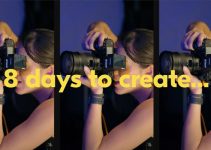One of the biggest challenges of every small independent production is doing a proper audio recording whether it’s an ADR (Automatic Dialog Replacement), a recording of a voice over artist, or any other practice of capturing high-quality audio at a home studio on a budget. Professional audio equipment has gotten very affordable over the years, and the overall trend in terms of price and accessibility to professional features is still going in the right direction.
Yet, many filmmakers struggle to find the proper balance between video and audio or they simply don’t want to bother too much with the latter. In reality, getting affordable audio equipment is not the biggest issue, though. Finding the physical space with the right acoustics where actually you can do your recording is.
Soundproofing a room is still an expensive investment and is mainly reserved for pro studios. However, this doesn’t mean that you can’t achieve professional results on a budget. On the contrary, you definitely can and you can do so without spending a fortune on your in-house improvised studio.
Here are some tips and tricks that can help you to significantly improve the sound environment in your home so that you will be able to do some excellent studio quality audio recordings. Besides the proper audio recorder and a decent condenser microphone you are also going to need an acoustic shield.
If these are still out of your budget you can easily put together a Microphone GOBO for less than ten bucks. Here’s how:
In essence, this tool eliminates the unwanted sounds like room noise, acoustic reflections or other sound artefacts as much as possible. Thus, you will be able to get a clean and high-quality audio recording of your talents comparable to the one you can achieve in professional studios.
Alternatively, if you need to isolate a bigger space of your room you can use moving blankets as baffle material which is also a great dirt cheap solution. These can be purchased online in packages for as little as $15 per blanket. They can be used not only in your home studio, but you can also utilise them on location as well.
The blankets are usually filled with sound absorptive recycled cotton fibers with the outer material made from cotton-mix fabric. These are very nice soft, thick blankets designed for soundproofing with enhanced acoustic qualities.
In general, sound absorption properties of acoustic materials are measured in standardized tests as Noise Reduction Coefficient. It does not really matter what the material itself is – the higher the NRC, the better its sound absorption quality. As-a-rule-of-thumb, materials with NRC below 0.5 are not considered to be acoustic quality so always make sure that you check this parameter before you purchase any piece of acoustic absorption material.
Ultimately, if you are in a hurry and you really need to do a high-quality audio recording right off the bat you can always use your wardrobe which also will provide an excellent acoustic environment on most occasions. Only make sure that your girlfriend doesn’t mind using her favourite set of dresses as a soundproofing material.
B&H Order Links:
Auray RF-CM-S Reflection Filter
Blue Yeti USB Microphone (Silver)
H6 Handy Recorder with Interchangeable Microphone System
Disclaimer: As an Amazon Associate partner and participant in B&H and Adorama Affiliate programmes, we earn a small comission from each purchase made through the affiliate links listed above at no additional cost to you.
Claim your copy of DAVINCI RESOLVE - SIMPLIFIED COURSE with 50% off! Get Instant Access!




Very nice article!